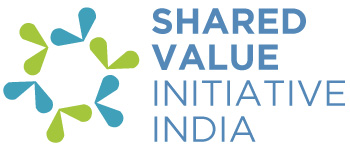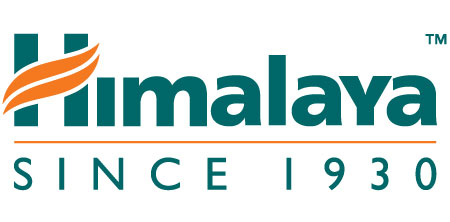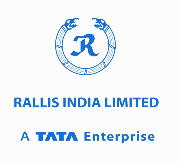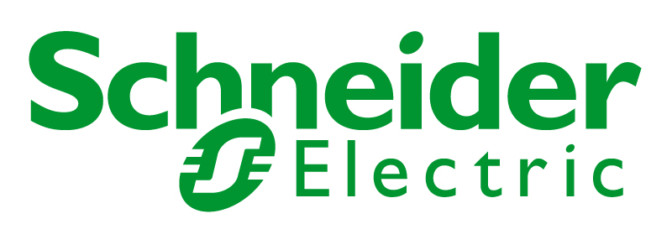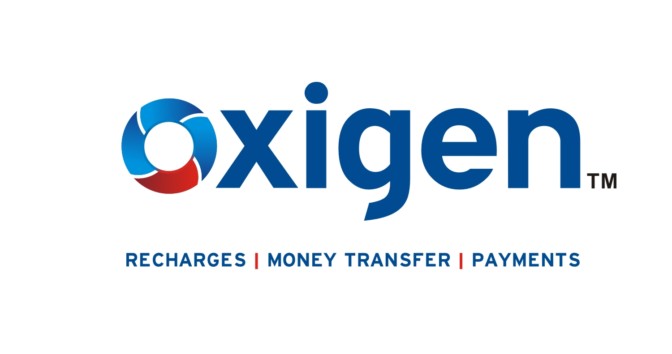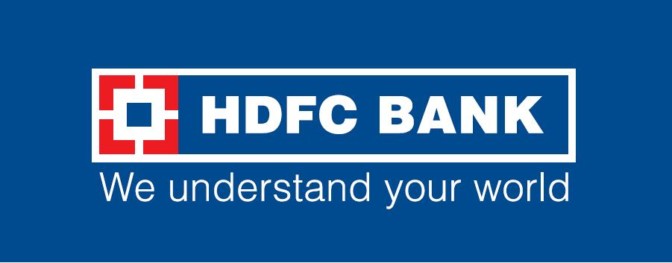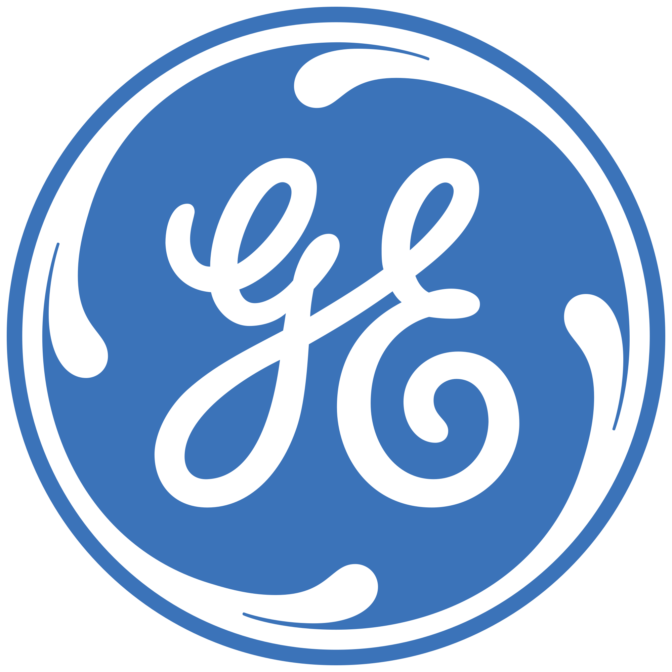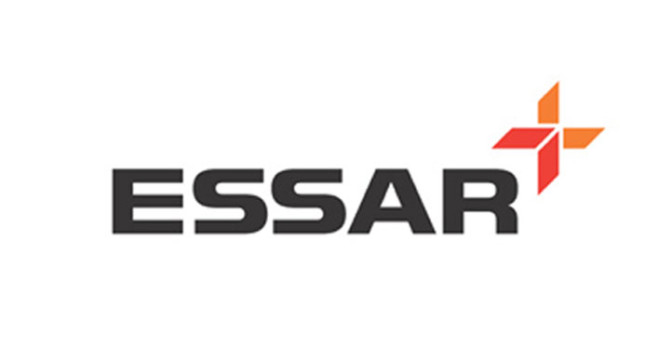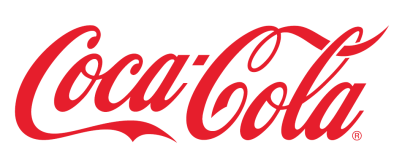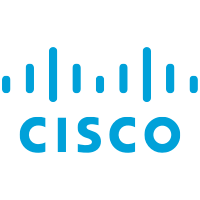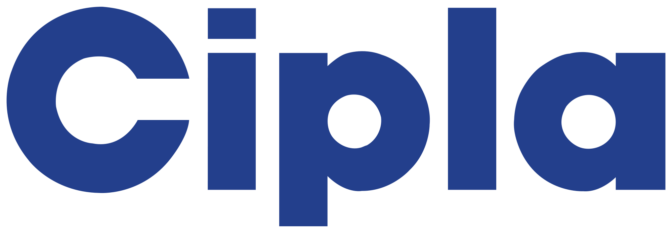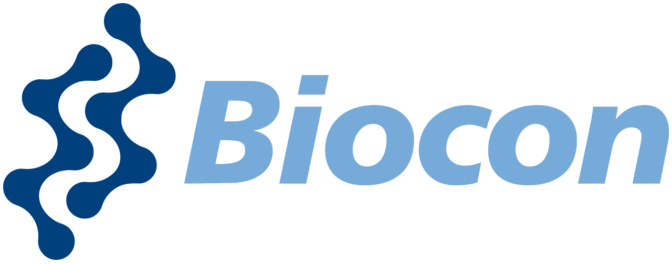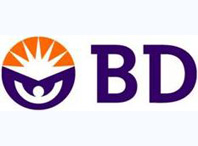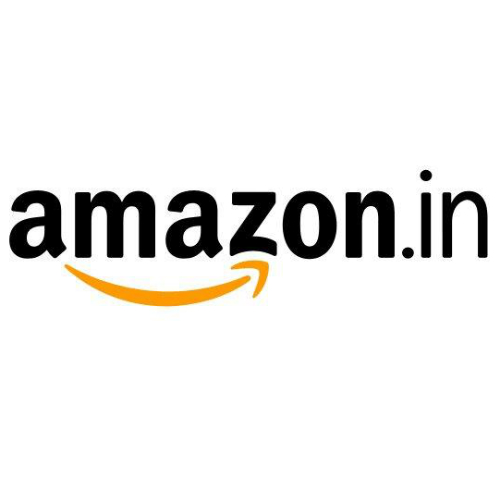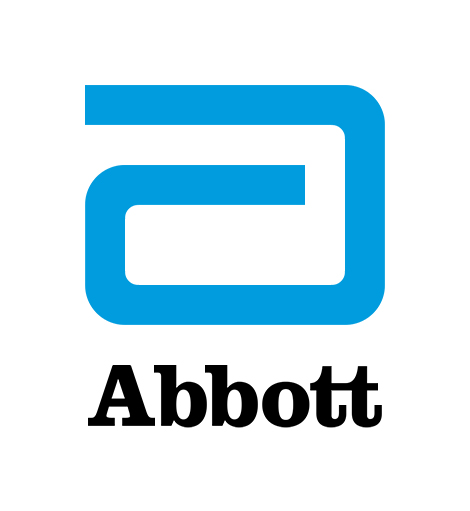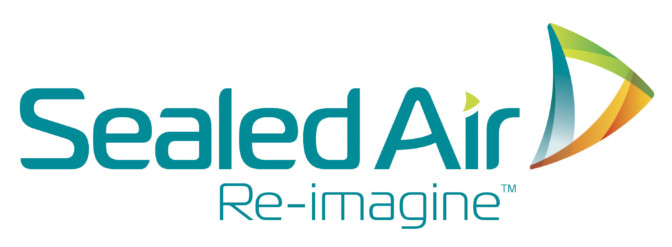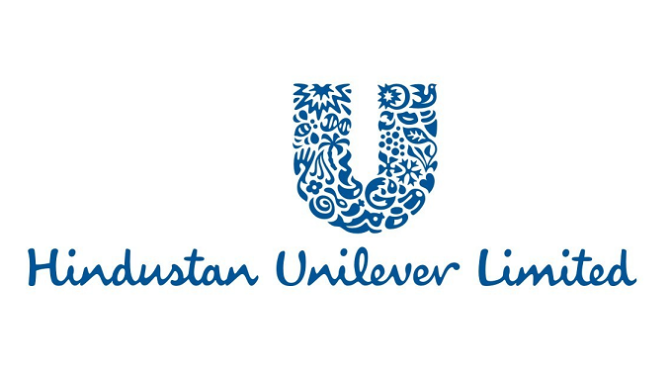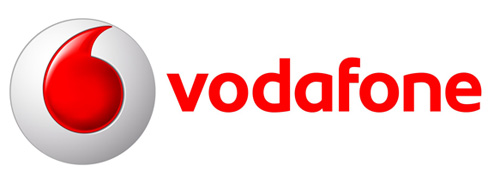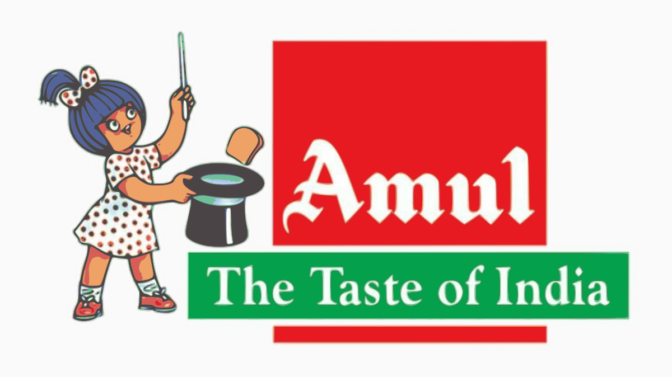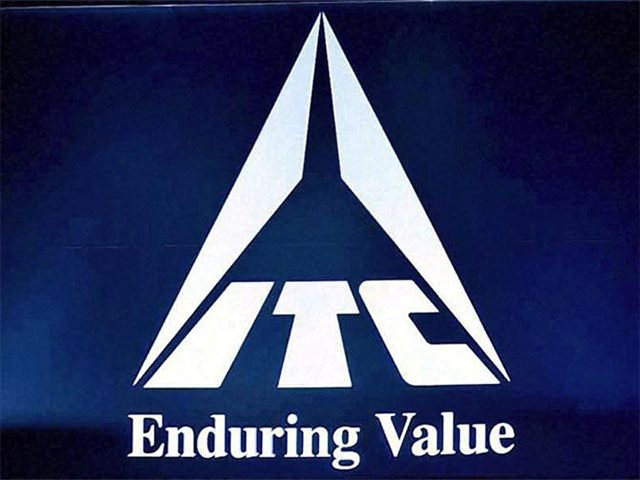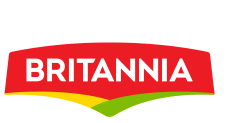[vc_row][vc_column][vc_single_image image=”3795″ img_size=”full” alignment=”center” full_width=”yes”][vc_tta_tour style=”modern” color=”sky” spacing=”2″ gap=”2″ active_section=”1″ no_fill_content_area=”true”][vc_tta_section title=”Introduction ” tab_id=”1455712945782-7fe1526b-926c”][vc_column_text]
Introduction
The new millennium has heralded a new age of capitalism. In this new age, global institutions and corporates are moving beyond the purely economic aspects of running a business towards an integrated approach to doing business with a strong focus on social and environmental benefits besides making economic gains. In a way, there is a conscious realization among countries, corporations, and institutions to move away from pure-play capitalism towards a new form of capitalism, which puts emphasis on social and environmental dimensions in the success criteria of business.
This social bent in the capitalist outlook aims to focus on the Base of the Pyramid (BoP) segment or the low-income underserved population, which collectively represent 65% of the global population. This segment is the result of a non-inclusive ecosystem that has led to their continual dependence on the informal economy for the fulfillment of their basic needs. Such a dismal state of affairs and their continuity arise from the several issues that are inherent to the institutional mechanisms that are put in place.
The first issue pertains to the limited success of the government in the implementation of the policies for enabling access to the fulfillment of the basic needs at the BoP as well as for encouraging entrepreneurship at the grassroots level. The second issue pertains to the limited successes of the non-government organizations (NGOs) in creating a scalable market-based ecosystem. The third issue pertains to the limited impact of the corporate social responsibility (CSR) initiatives by commercial enterprises. The primary reason being that CSR activity is a non-core activity of commercial enterprises thereby lacking the desired levels of market orientation, commitment and impact evaluation.
This limitation of government institutions, NGOs, and CSR based activities has led to the emergence of the concept of “shared value.” This concept is built on the idea of expanding the pie for all stakeholders involved, unlike corporate philanthropy and CSR that reduce the pie with redistribution. The idea of shared value, propagated by Michael E. Porter and Mark Kramer, nudges businesses to design and implement business models that aim at socio-economic impact. According to them, “The concept of shared value is defined as policies and practices that enhance the competitiveness of a company while simultaneously advancing the economic and social conditions in the communities in which it operates. Shared value creation focuses on identifying and expanding the connections between societal and economic progress”.
Over the years, there has been growing recognition among firms of the benefits of shared value and a rising trend among them to pursue shared value activities. These businesses have integrated social good into their business strategies and are becoming increasingly inclusive in practice. Apart from the goodwill, these enterprises gain from socio-economic business models; they have also found it economically profitable to pursue the goal of shared value. Since these companies are gradually becoming more inclusive in nature, but still have a long way to go before they manage to inculcate all the intricacies of being a shared value enterprise, we call them “Inclusive Businesses”. The rise of such inclusive businesses signals a shift away from the non-inclusive ecosystem that has failed to lift the BoP segment of the population along with the rising tide of prosperity
The Inclusive Business List is launched with an aim to celebrate fifty such enterprises that are redefining the role of businesses in society and to encourage them to continue down the path of shared value creation. It is one of the key initiatives to identify, assess and recognise the organisations operating in India, which are creating a measurable socio-economic value by identifying and addressing social and environmental problems that intersect with their businesses.[/vc_column_text][/vc_tta_section][vc_tta_section title=”Methodology” tab_id=”1455712945857-231d13a2-72bf”][vc_column_text]
Methodology
The Inclusive Business List 2016 recognizes companies that are involved in addressing social problems with activities that are a part of their core business strategy. This list strives towards presenting a well-rounded compilation of enterprises from a diverse set of industries. The selection of companies involves a multi-step process. The first step involves the creation of a list of medium and large-scale enterprises that have significant operations in India. In the second step, an overview of these enterprises is created describing any visible initiative having social or economic relevance along with an economic viability. The final step involves extensive discussions with a team of shared value experts on the inclusive business orientation of these companies. These companies were assessed based on the following parameters:
- Social issue and challenge being addressed: The scale of the social problem being addressed by the company’s product or service offering or an initiative and its reach and impact on the people affected by the problem.
- Sustainability of the initiative: The economic benefit of the social initiative to the company and its stakeholders was considered to examine its self-sustainability.
- Degree of innovation: The extent of innovation in a company’s efforts were also given weight as pursuing shared value strategies calls for adoption of unique socially impactful actions.
A final selection of fifty companies has been done after a thorough assessment based upon the above parameters. The data collection for these companies involve review of secondary data from varying sources in public domain including annual reports, company website, sustainability reports and other websites.
IBL 2016 aims to promote the idea that concepts like CSR and corporate philanthropy are critical but have limited impact. Companies need to move beyond these concepts and advance their journey towards creating shared value. The list illustrates examples of fifty companies that have overcome the challenges of scalability and investments required to become more inclusive in society. They have the potential to be the shared value enterprises of the future.
[/vc_column_text][/vc_tta_section][vc_tta_section title=”Companies” tab_id=”1455713113516-f0a6c673-adf4″][vc_toggle title=”Abbott India” icon=”0″ icon_closed=”0″ el_id=”1479316636766-e139fc2f-2c2e”]Surviving for a century within the competitive and heterogeneous Indian market space is a challenge. It requires consistent focus and tireless efforts by any company towards becoming a household name and Abbott India has worked successfully on that front throughout its journey of 106 years in the country. Abbott’s products have unparalleled brand recognition in India owing to its consistent efforts in building a strong connect with patients and their caregivers.
Over the years, the company has made consistent efforts towards enabling better awareness through patient engagement activities and education initiatives. At the forefront, there are campaigns around thyroid and women’s health, which have reached a million people and 84,000 women respectively. Around 1 in 10 urban Indian suffers from thyroid and despite its prevalence, low awareness is a serious challenge. So, it is no wonder that Abbott’s campaigns have catapulted the company’s thyroid drug into the top spot for the treatment of the disease. Another Abbott campaign targeting women who have a threat of miscarriage with life kits carrying Duphaston have had similar results for the drug. The company also partners with healthcare professionals by providing them with critical insights about the new developments in the medical world. It has reached out to over 200,000 doctors across India through various events and training camps. This has also been done through the company’s e-learning program, Knowledge Genie.
Apart from this continuous engagement with patients and doctors alike, Abbott has maintained market leadership with a comprehensive portfolio of over 480 products in 9 key therapeutic areas, which is a result of its intensive focus on innovation and R&D. The pharmaceutical giant has taken a unique holistic approach towards the development of all stakeholders in the pharmaceutical industry and that has ensured the company’s success in no small way.[/vc_toggle][vc_toggle title=”Adani Wilmar” icon=”0″ icon_closed=”0″ el_id=”1479316883399-0d1ad547-0b59″]In a country having the world’s largest diabetic population, a gaping need lay unaddressed: the utter lack of healthy food options for the typical diabetic Indian. Adani Wilmar was the first to foresee this deficit and shifted from a product-based to purpose-based positioning with its launch of a healthy range of edible oils in 2015.
The company found in its internal research that sesame oil was as effective in reducing elevated blood sugar lipids and blood pressure as the regular allopathic drugs. This resulted in the creation of Fortune Vivo, which aimed at managing diabetes apart from addressing a host of other lifestyle issues. A microsite, Vivo Buddy, supports the product by educating the customer about the disease and how the oil can help in managing it. The company has also tied up with renowned doctors across the country to answer any medical questions its customers might have about the disease.
Apart from diabetes, Adani Wilmar also aims at combating heart ailments with its rice bran oils. Lifestyle diseases are becoming a growing concern in India and Adani has taken it upon itself to fight the menace at its roots. The company serves more than 50 million households and has a growing market in the gradual rise of health-conscious consumers.[/vc_toggle][vc_toggle title=”Amazon India” icon=”0″ icon_closed=”0″ el_id=”1479316917546-fce7d086-17aa”]When the world’s largest marketplace decided to enter the Indian market three years ago, there were a few Luddite concerns of Amazon’s debut affecting the 14 million mom-and-pop stores that are peppered across the country. These stores typically feature high prices and limited inventories and are usually the only retail outlets in rural areas. Concerns of Amazon putting these stores out of business had been aplenty.
Instead, Amazon built an inclusive partnership with these stores to extend its delivery platform in remote areas where Internet accessibility was scarce. Residents go to these stores and use the owner’s Internet to browse and purchase Amazon’s goods. The order gets delivered to his store, and he receives a handling fee in the process. Store owners have also reported an increase in the sales of their products while Amazon’s customers were in their store. The arrangement benefits all the stakeholders involved.
The company had to reinvent itself for the Indian market on other fronts as well. Three years ago, relatively few retailers sold their products online under the belief that the e-commerce market was too complex. To get them on board, Amazon wheeled out a program called Amazon Chai Chart in which mobile tea carts navigated through city streets, serving refreshments to small-business owners while teaching them the virtues of e-commerce. The Chai Cart team traveled more than 9,400 miles across 31 cities and engaged more than 10,000 sellers. It is no wonder that in just three years of presence in the Indian market, the company has registered a growth of 250% in its seller base, which has now expanded to 85,000 vendors. With its timely service and affordable pricing, Amazon has also captured 24% of the e-commerce market share in India.[/vc_toggle][vc_toggle title=”Amul” icon=”0″ icon_closed=”0″ el_id=”1479316955058-0b0094ad-77e0″]Amul will always be remembered by its iconic Amul Girl mascot with her polka-dotted frock and blue hair, who has punned her way through years of Indian public life and pop culture. Major events of national and political importance like the Emergency of 1976 and the recent litany of corruption scandals have fallen victims to her cheeky humour.
However, milk producers in districts where Amul has a milk society will remember the company for something more than its mascot. These farmers owe their improved livelihoods to the Amul model, which creates a direct linkage between milk producers and consumers by eliminating middlemen. It was born out of a cooperative movement that started to end the exploitation of farmers and has been successful in raising the standard of living of millions of farmers over the years. In the last six years alone, Amul has succeeded in doubling farmer’s incomes. This has happened due to the remarkable increase of 87% in milk procurement by the company, which in turn, led to a rise in income levels of member farmers.
Apart from Amul’s numerous initiatives of community development, it is the company’s business model itself, which has transformed the lives of 150 million rural milk producers and has given gainful employment to the most vulnerable sections of India’s rural population. The Amul model has become an inspiration to many other enterprises entering the dairy market.[/vc_toggle][vc_toggle title=”Becton Dickinson” icon=”0″ icon_closed=”0″ el_id=”1479316979135-29b94c67-76a7″]Tuberculosis claimed more than 1 million lives globally in 2014. This frightening air-borne disease of the lungs is more prevalent in the developing countries like India. The complexities around the disease like lack of awareness especially among the low-income population, high cost of treatment, lack of timely diagnosis, and long duration of medication renders the treatment ineffective thereby posing a continuous challenge to the healthcare practitioners and community in countries like India.
Realizing the criticality of time and accuracy in the diagnosis of complex diseases like TB, Becton Dickinson designed the TB diagnostic system for hospitals and labs in India. BD offers automated diagnostic systems like BD Bactec MGITTM 960 for enhancing the accuracy of diagnosis while reducing the time taken for diagnosis of different types of TB. This has led to the significant improvement in administering the correct and timely treatment to the TB patients thereby minimizing the chances of recurrence or failure.
BD spends 6% of its sales revenue on research and development activities across three business segments including medical, diagnostics and biosciences. Realizing the increasing role of technology in medical devices landscape, the company has acquired and collaborated with global players to integrate analytics and IT capabilities in the domain of medical and diagnostic product offerings. It has also setup a world-class manufacturing facility in India for producing over a billion medical devices comprising disposable needles and syringes using a highly automated process as per global standards. Also, it has collaborated with healthcare sector skill council in India to launch a comprehensive set of training modules for lab professionals in phlebotomy (blood collection) in order to increase their employability besides addressing the shortage of skilled healthcare professionals.[/vc_toggle][vc_toggle title=”Biocon” icon=”0″ icon_closed=”0″ el_id=”1479317128969-73a6775f-c8f9″]Nearly half a billion people have diabetes around the world. The alarming growth of the disease at a global scale has led to a rising demand for effective therapeutic remedies. However, out of the 100 million people who need insulin, only ‘one in two’ can afford the costs associated with chronic insulin therapy. Being a leading insulin producer, Biocon has been making tireless efforts towards making high-quality insulin accessible to patients worldwide at affordable pricing.
Biocon, one of India’s leading biotechnology companies focussed on affordable product innovation, entered the diabetes space over a decade ago. In 2004, the company introduced its recombinant human insulin, Insugen, at less than half the prevailing prices. Another drug, Basalog, a long lasting basal insulin glargine for type 1 and type 2 diabetes was launched in 2009 at an affordable price point. This has been offered in pen-like devices since last year to make administration of insulin easy. A game-changing oral insulin is also in the pipeline. Alongside, Biocon has been working at increasing diabetes awareness among marginalised communities through diabetes camps. Almost 3.5 lakh patients have also benefitted from its diabetes care helpline. Similarly, nearly three lakh patients have received support through their Insulin Therapy Assistance Programme initiative, which aims at better patient compliance to insulin therapy.
Diabetes isn’t the only area Biocon is focussing on. In 2006, the biotech giant launched India’s first anti-cancer drug. Later, it also went on to deliver the world’s most affordable drug for breast cancer. Biocon has invested majorly in cutting-edge research with the objective of reducing therapy costs for chronic conditions like diabetes, cancer, and autoimmune diseases. This has enabled the company to cross new milestones in the area of drug affordability.[/vc_toggle][vc_toggle title=”Britannia” icon=”0″ icon_closed=”0″ el_id=”1479317152712-c1a7c831-262c”]It has been almost two decades since Britannia incorporated the ‘Eat Healthy. Think Better’ tagline and since then the 124-year old company has committed itself to delivering products with a health focus.
In its first major initiative, the company targeted the problem of anemia among children, which has affected nearly two out of three children in India. It partnered with the Global Alliance to Improve Nutrition (GAIN) in 2007 to re-conceive its Tiger biscuit product line. Iron-fortified biscuits were introduced with a complementary public education campaign to improve awareness of anemia. A 2009 pilot study found that consumption of fortified Tiger biscuits raised iron levels of sampled children by more than 25% within 90 days.
In a more recent initiative, Britannia has taken up the issue of rising incidence of diabetes among Indian adults, a health concern affecting 62 million Indians. The company has launched NutriChoice Diabetic Friendly Essentials, a wide variety of sugar-free snacks, to address the nutrition and taste needs of a person with diabetes. Britannia claims having a 66% market share in the INR 500 crore market for digestive biscuits.
These innovative products should contribute significantly towards addressing the nutritional and lifestyle issues of the rapidly urbanising urban population.[/vc_toggle][vc_toggle title=”Cargill India” icon=”0″ icon_closed=”0″ el_id=”1479317180077-3cbd8fd4-842e”]It is always a gamble to be leaders in a new product category, but it paid it off for Cargill in 2008 when it decided to fortify its leading brands of edible oils. This decision set an industry trend in India for the fortification of edible oils.
Cargill’s move proved to be one of the most effective ways of delivering micronutrients to large population groups as edible oil is consumed by almost 99 percent of Indian households. The company reached approximately 25 million people with its fortified oils. It has also engaged with central and state governments to advocate food fortification and make fortified food available through the government-run public distribution system.
The company has consistently worked towards innovating its products and services to improve the nutrition levels and food security in India. Another area Cargill has focuses upon is enhancing the productivity of its value chain. For its animal nutrition business, the company has worked with dairy farmers in the country to optimize farm techniques and boost milk productivity over the years. In 2014 alone, Cargill educated nearly 30,000 farmers on nutrition and the best practices of farm management. The company has played an exemplary role in addressing societal needs with its innovative offerings and optimising the resource use across the value chain.[/vc_toggle][vc_toggle title=”Cipla” icon=”0″ icon_closed=”0″ el_id=”1479317215042-abd1391f-2d2b”]The man behind Cipla’s claim to fame, Dr. Yusuf Hamied, likes to say that his idea of a better world is one in which there are no patents on medical discoveries and no profiteering from life and death. It is no surprise that he has come to be known as modern-day Robin Hood. Hamied, carrying forward his father’s vision of affordable healthcare for all, shot to fame when he made a statement during the European Commission meeting held at Brussels in early 2000 that he could sell a three-drug combination for the treatment of AIDS at $800 per patient a year when the same was being sold globally at $12,000. Cipla went on to sell it for $350 a year and saved millions of lives across the world while inviting expensive lawsuits from multinationals. Today, every one in three people affected by HIV globally is using Cipla’s drug for treatment.
Cipla has done the same with other essential drugs over the years. The group produced an inexpensive anti-flu drug during the bird flu epidemic in 2005. It has manufactured a less-than-a-dollar anti-malaria drug. In 2012, it announced a drastic price reduction of up to 75% on select cancer drugs, thus making world-class medicines affordable and accessible to cancer patients. The company now manufactures over 1500 products that are shipped to more than 150 countries. Despite their low prices, the company is earning profits from these low-cost generics owing to large volume sales. Its turnover has grown from $120 million to $2 billion in the last one and a half decade.
Cipla has been industriously working on its vision of providing affordable healthcare to all and the amount of goodwill it has generated over the years stands in support of its efforts.[/vc_toggle][vc_toggle title=”Cisco Systems” icon=”0″ icon_closed=”0″ el_id=”1479317239135-4104d2b9-b5cc”]With the buzz in the IT industry revolving around the hardware and software space, networking is the orphan that is usually forgotten about, despite its crucial role in connecting the two. The neglect extends to academic institutions in India and this skill gap in skilled networking professions could hinder the country’s IT growth as data centres mushroom and the Internet expands. Visualising this gap as an opportunity, Cisco has been working towards the development of networking talent in many ways under the Digital India campaign.
The US-based networking giant has launched an initiative, The Networking Academy, which blends classroom instruction with online curricula, hands-on lab exercises, realistic network simulations, and Internet-based assessment tool to prepare students for entry-level IT career opportunities. In India, 186 Cisco Academies have been set up across 26 states with a plan to set up 25 more by 2020. More than 122,000 students have been trained under the program so far. In addition to imparting IT knowledge and networking skills, The Network Academy also aims to bridge the ‘digital divide’ by extending technical education to rural India including technologically backward states like Kashmir, Orissa, and Tripura.
This initiative has developed a pool of networking professionals who can play a significant role in bridging the demand-supply gap of skilled technical resources. Such social investments contribute to the long-term growth of the company while building a stronger community around it.[/vc_toggle][vc_toggle title=”Coca-Cola” icon=”0″ icon_closed=”0″ el_id=”1479317270333-bf8004cd-2d1f”]Coca-Cola is easily the most recognizable brand in India. It has come a long way since the fiasco in 1977, when the Indian government demanded the company to partner with an Indian entity and it chose to exit the country from a market leadership position instead. The company made a dramatic return in 1993 after acquiring Parle’s Thumbs Up infrastructure and has increased its market presence dramatically since then. India jumped from being the nineteenth largest market for Coca-Cola worldwide in 2006 to sixth this year.
The company has also tried to supplement India’s growth as much as the country has contributed to its rise by setting up significant community development initiatives. When Coca-Cola launched its ambitious goal of economically empowering 5 million women entrepreneurs across the Coca-Cola value chain by 2020, India was identified as one of the four countries in which the pilot program was implemented. The initiative has gone from strength to strength over the years benefitting around 26,000 women in the country. The company’s Coca-Cola University plans to train and up-skill 3,50,000 people in the country that will aid the government’s Skill India program.
Its global innovation initiatives have also brought about efficient resource utilization. The company’s plants in India use 40% less water than that they did five years ago. Coke’s global R&D in partnership with India Glycols has also found a way to produce PET from waste that comes out of processing sugarcane, which can be used to produce PET bottles. Packaging of the beverage sold in 60 countries is done using PET made in India.[/vc_toggle][vc_toggle title=”Dabur India” icon=”0″ icon_closed=”0″ el_id=”1479317300023-eecafe66-625d”]Dabur was one of the few Indian companies to start its own R&D lab in 1919. With its humble beginnings in the bylanes of Kolkata, the company has come a long way in making the traditional science of Ayurveda popular and easily accessible to generations of Indians. Dabur has innovatively integrated traditional knowledge with modern day science to shape its products into perfection leading to trust and acceptance among the people in India.
During its 130 years of operations in India, Dabur has introduced several low-cost, high-quality Ayurvedic products for personal care – including the first branded hair oil in 1940 and the first branded Ayurvedic medicine in 1949. The company has recently planned to focus on expanding its range of healthcare products riding on the recent consumer interest in herbal and natural products. Today, it has over 250 products in the Ayurvedic medicines segment. In 2016, Dabur partnered with the Central Council of Research in Ayurvedic Sciences (CCRAS), under the Union Ministry of AYUSH to commercially produce two Ayurvedic drugs – one for the management of diabetes and another for the treatment of malaria.
Dabur owns greenhouses in the Himalayas where it grows rare herbs that it uses for producing these medicines. The company’s R&D labs employ 89 research scientists who have launched 44 products in the Ayurvedic category and conducted 14 trials over the last year.[/vc_toggle][vc_toggle title=”Essar” icon=”0″ icon_closed=”0″ el_id=”1479317326874-1df3957b-f4a4″]In its 47 years of existence, Essar Group has diversified across sectors spanning from agriculture to steel to BPO services. Each of these sectors has had a consistent commitment to sustainable business practices. From energy-saving initiatives to water conservation, greening exercises, and waste management, Essar ventures have been consistent in their commitment to reducing their carbon footprint and to protecting the environment.
Essar’s steel plants practise rainwater harvesting to reduce dependence on ground water making them the lowest specific water consumers among global steel players. Essar Oil is the leader in terms of carbon management in the Indian energy sector. Essar Logistics maps all its vehicles for emission levels and overhauls them when necessary. All Essar plants have also ensured zero wastage. In fact, Essar Steel has an efficiency level of 100 percent by reusing materials like surplus steam from blast furnaces to generate electricity.
All these initiatives are not just taken for environmental protection, but also make economic sense for the company. Essar has made considerable savings from its water conservation techniques (2.8 million rupees in 2011-12 alone) and reduced emission levels. The efficient use of resources has made the company’s operations more sustainable, thereby benefiting not only itself but also all stakeholders and impacted communities.[/vc_toggle][vc_toggle title=”Essel Infrastructure” icon=”0″ icon_closed=”0″ el_id=”1479317375801-6afb8628-0f03″]India produces 140,000 tons of solid waste every day. Only 29% of it receives treatment. Chennai largely burns its waste; Delhi has three of its four landfills overdue for closure; Kolkata has two nearly saturated dumps; Mumbai passed a regulation to treat waste at dump yards in 2006 but has only recently begun to treat a little over 10% of it. All Indian cities are reeling under poor management of waste and Essel Infrastructure is working on innovative ways to address the growing challenge of solid waste management.
Apart from its core infrastructure and green energy projects, Essel provides a private sector solution to this growing challenge to sustainable living with its waste to energy projects in ten cities. It is, in fact, India’s largest operator in Municipal Solid Waste to Energy Management. It also has a wastewater treatment and desalination project in the works. The company is also in the process of developing an adequate sewerage network system in smaller cities to address issues of waste disposal.
Besides solid waste management, Essel has also made great advancements in the areas of renewable energy with its 13 solar, 17 hydro, and 11 wind projects. It is in the process of becoming the leading renewable energy company in India. The company has made significant contributions to making India’s growth story sustainable during its mere nine years of existence.[/vc_toggle][vc_toggle title=”Essilor” icon=”0″ icon_closed=”0″ el_id=”1479317508598-5545f5c1-495c”]Vision impairment is undoubtedly one of the most common disabilities in the world having large impact on the overall social and economic lifestyle. Yet its impact on the society is largely unrecognised and overlooked. In India itself more than 500 million people suffer from visual impairment and their disability costs the country more than $37 billion in lost productivity every year.
During 2013, Essilor set up the inclusive business division – 2.5 NVG (New Vision Generation) to design and implement new business models for enabling access to affordable vision care for the underserved population in India and other developing economies. Setting up 2.5 NVG was driven by the company’s belief in ‘improving lives by improving sight’. The business model innovation involved two major steps aimed at improving the last-mile connectivity and reach to the underserved segment. The first step involved identifying, training and empowering the local individuals primarily women as Vision Entrepreneurs also known as Eye Mitra Opticians (EMOs) in India. This enabled the company to build awareness, trust and transparency at the grassroot level besides improving the lives and income levels of the locals engaged as EMOs. The second step involved collaborating with the hospitals, NGOs, foundations and governments for deploying mobile refraction vans, vision clinics and public vision screening camps. Besides business model innovation, 2.5NVG launched Ready to ClipTM. This product offering enabled on the spot dispensing of affordable, customized, comfortable and attractive eyewear to the hard-to-reach underserved communities in semi-urban and rural areas. By 2016, the company created a network of more than 1200 Eye Mitras serving more than 200,000 people in India. This program is acting as a game changer by bringing primary vision care to the doorsteps of the underserved population besides creating employment for the local individuals.
The company invests more than € 200 million per year in research and innovation to develop solutions for diverse vision related needs of the consumers irrespective of the income and geography.[/vc_toggle][vc_toggle title=”Fab India” icon=”0″ icon_closed=”0″ el_id=”1479317539286-a5e61a00-b0ee”]Mahatma Gandhi famously proclaimed that India lives in its villages and it is there we should turn our focus to instead of our few cities and towns. Fab India intended to showcase that India to the West when it began its journey in 1960. It created a global market for the diverse craft traditions of Gandhi’s India thereby generating rural employment and sustaining traditional craftsmanship. Over the years, Fab India’s marketing focus shifted to the local Indian retail market, and the company has since worked on reconnecting the two Indias, which would have made Gandhi proud.
The retailer’s supply chain covers a third of India’s 650-odd districts and does a stellar job of enabling social change at the grassroots level while engaging in a profit-making business for urban shoppers. Fab India works closely with over 55,000 artisans by providing them with technology, quality guidelines, capital, raw material, and invaluable advice on latest trends and consumer demands. It also has a unique Community Owned Company (COC) business model which aims to empower the supplier by setting up of supplier regional communities (SRCs), which are community owned companies, self-managed and partly owned by rural artisans. These SRCs offer joint ownership of resources and trains artisans in developing new handicrafts. This innovative model has proved to be mutually beneficial for the supplier as well as the company.
Fab India is now moving beyond the SRC model to focus more on cluster development that will help artisans in optimising their processes and shape market trends. The company believes that this would have a greater social impact. The enterprise presents a unique model that exemplifies the extent of social impact that can be achieved by addressing business interests in innovative ways.[/vc_toggle][vc_toggle title=”General Electric” icon=”0″ icon_closed=”0″ el_id=”1479317576318-de163bd0-3278″]GE has consistently lived up to its legacy of invention and innovation. Since its establishment 120 years ago, the company has kept with the times and transformed from an industrial powerhouse into a digital industrial firm. It has expanded its expertise across industries like aviation, transport, energy and healthcare while simultaneously driving digital innovation into all its activities. Much of the digital innovation flows from the company’s global innovation centres (GRCs) and the biggest GRC outside the US is located in Bangalore.
Although innovations developed out of the Bangalore centre power GE products throughout the world, some of them find interesting applications in the Indian context. Healthcare is one such sector. For instance, there are many babies in India that are born with a condition known as baby jaundice. People in villages and smaller town typically use sunlight to treat the problem. This mostly treats jaundice but also creates some complications due to exposure of sunrays. Phototherapy, which uses compact fluorescent lamps (CFL), has traditionally been used to treat this condition. But, GE found their application in India to be lacking. When company executives investigated the issue, they found that these machines were costly and fans, which cool the CFL, fail to function in dusty rural areas. The company solved all these issues by replacing CFL with a LED lighting unit. Following this innovation, LED phototherapy has become the global standard to treat babies.
Apart from the healthcare sector, GE has been providing efficient, productive and eco-friendly technological solutions for India’s oil and gas sector. As India’s oil and gas sector is due for expansion as the country has proven reserves for 206 billion barrels of oil and only 67 billion are online, GE’s products will continue to impact millions in the coming future[/vc_toggle][vc_toggle title=”Gilead Sciences” icon=”0″ icon_closed=”0″ el_id=”1479317610907-ada0a76a-adb8″]The contradiction between innovation and accessibility is a tough nut to crack for drug companies in general and Gilead Sciences repeatedly finds itself taking flak for the pricing of its hepatitis C drug, Sovaldi. The drug, priced at $1,000 a pill, makes its 12-week course of treatment unaffordable for a majority of patients.
However, in India, where the incidence of the virus is among the highest in the world, the company has followed a pricing strategy to make the drug accessible at $10 a pill. This was made possible by the licensing pacts signed by Gilead with eleven pharmaceutical firms to manufacture and market the drug in the country. The company maintained that its pricing policy would remain the same even after it was granted a patent for the drug in India in 2016.
The drug is now within affordable reach of the 12-18 million Indians affected by hepatitis C, which had been difficult to treat before the critical breakthrough with the development of Sovaldi. Gilead has provided a major advancement in the fight against hepatitis C in the developing world and is working towards finding a cure of other deadly diseases as well.[/vc_toggle][vc_toggle title=”GlaxoSmithKline” icon=”0″ icon_closed=”0″ el_id=”1479317683206-c87bb0fa-7d59″]When Sir Andrew Witty started his tenure as the chief executive of the British drug giant GlaxoSmithKline (GSK) back in 2008, he inherited a company whose revenues were flat, patents of top drugs were close to expiry, and was facing criticism for certain corporate actions in many countries. In 2017, when he hangs up his boots, he’ll leave behind a company that has transformed itself into a global enterprise having significant social impact alongside rising profits. The consumer-friendly image of GSK today has been a result of significant efforts and strategic decisions taken by the company in last nine years.
One such major effort towards that goal involves moving away from the licensing of essential drugs in the Least Developed Countries (LDCs) and Low-Income Countries (LICs), thus allowing a supply of generic versions of their drugs. For Lower Middle-Income Countries (LMICs), like India, GSK will file for patents but will seek to offer and agree on licenses to allow supplies of generic versions of its medicines for ten years. This will lower the price of essential drugs drastically in these markets thereby enhancing their accessibility and affordability to the masses. At the same time, the company will also gain economically owing to an increase in volume sales of these drugs.
The company also scaled up its R&D spending to $4.5 billion a year to focus on innovation of new and better drugs. According to the InnoThink Center for Research in Biomedical Innovation, it has got FDA approval for 13 drugs in Witty’s tenure, more than any company except Johnson and Johnson.[/vc_toggle][vc_toggle title=”Godrej” icon=”0″ icon_closed=”0″ el_id=”1479317720490-060a382f-7b85″]In its 118-year association with India, Godrej has lived through India’s history. During the Swadeshi movement, it was making indigenous soaps; in free-India’s first elections, it made the needed 1.7 million ballot boxes; post-liberalization, it ventured into real estate and retail; and in India’s first mission to the moon, it provided the engineering expertise. Recently, when environmental concerns became serious in the Indian context, the company introduced “Good and Green” range of products. The aim of the initiative is to ensure 25% reduction in energy consumption, achieve zero waste and carbon neutrality and generate one-third of its portfolio revenues from green products and services by 2020.
As a part of this initiative, the company is re-conceiving its products to achieve these goals. One of their unique product innovations has been an effective tool to combat mosquito-borne diseases, which are a serious health challenge in India. The market for mosquito repellents is largely driven by liquid vaporizer machines, which require electricity, and coils, besides producing harmful smoke. Godrej introduced “Fast Card,” which produces less smoke, is environmentally friendly, costs much less, and does not require electricity. With the introduction of Fast Cards, there has been a 7% increase in the number of households using Godrej’s household insecticides and rural penetration has reached 34%.
The Fast Card is just the latest in a wide variety of products introduced by Godrej that are either ‘good,’ in the sense that they cater to customers at the bottom of the pyramid or ‘green,’ that is they are environmentally sustainable.[/vc_toggle][vc_toggle title=”Google” icon=”0″ icon_closed=”0″ el_id=”1479317742858-dc77c54f-5db3″]Google’s India-born CEO Sundar Pichai recently remarked that improving Google’s products in India make them better for everyone around the world. For instance, the offline version of Google Maps was first introduced in India, and then in the US and Europe. The Indian market with its slow Internet speeds and low Internet penetration is a tough nut to crack and requires any technology company to innovate constantly. Google is usually on top of innovation trends and the company’s approach to navigating through Indian challenges has been no different.
Since only a third of the Indian population has access to the Internet, Google has a lot of scope to expand its market in the country. In a bold move to expand the access to Internet of a billion-plus population, the technology giant is working on providing free Wi-Fi connectivity to more than 400 railway stations in India. This will provide high-speed Internet connectivity to the millions that pass through these stations daily. Nearly 3.5 million users are now using Railways Wi-Fi, and 15,000 new users are coming online every day.
India also suffers from a gender disparity in its Internet user base. Only a third of India’s online users are women. To address this challenge, Google launched a digital educative initiative, Internet Saathi, under Helping Women Get Online campaign. Internet Saathi sends women out on bicycles, armed with a smartphone and tablet, to let women in villages experience the net. The initiative has covered more than 25,000 villages and over a million women across ten states have been trained on the basics of the Internet.
Google’s initiatives will drastically impact accessibility and awareness of the Internet in India, which has been largely lacking despite the country being home to some of the world’s top global software companies. This approach towards digital inclusion will also benefit the company itself as a rise in Internet users inevitably implies enhanced usage of the Google platform.[/vc_toggle][vc_toggle title=”HDFC Bank” icon=”0″ icon_closed=”0″ el_id=”1479318982905-de9e0aec-8177″]Earlier, banking the rural population was a costly affair due to lower demand. However, HDFC has realised that costs can be managed through the use of better technology. The bank set up one-man branches and enabled them with the necessary technology to provide seamless transactions, and made customers financially literate by guiding them to use net banking and other digital platforms. In its quest of banking the unbanked, HDFC went a step ahead and changed livelihoods.
HDFC Bank’s Sustainable Livelihood Initiative (SLI) has empowered thousands of rural people, especially rural women at the bottom of the pyramid by providing them with livelihood finance. The bank has rural business hubs attached to its branches, which cover thousands of villages in 24 states. Through these business hubs, 439 of which are involved in SLI, participants avail credit and utilize it for various occupations. They also avail services such as credit counseling, training for occupation skills enhancement and also market linkages. The bank also conducts pre and post credit counseling sessions to impart financial literacy.
This approach towards financial inclusion has eliminated middlemen and moneylender and has allowed the availability of credit in rural areas at lower rates with increased transparency. The disbursement of loans and the financial services have reached the doorsteps of almost 5.5 million rural households in villages spread across 360 districts in 25 states.
[/vc_toggle][vc_toggle title=”Hindustan Unilever” icon=”0″ icon_closed=”0″ el_id=”1479319006174-01f7692f-e428″]Hindustan Unilever is omnipresent in every Indian life: from using the soap in the morning and cooking the noodles in the afternoon to brewing the coffee in the evening and sharing the ice cream at the dinner table. Considering the scale of its business, HUL had a unique opportunity to impact millions of lives associated with its value chain. The company did exactly that and has consistently worked on a three-pronged development strategy aimed at improving health and well-being; reducing environment impact, and enhancing livelihoods.
In the area of health and hygiene, HUL has been working on a massive campaign to reduce the national incidence of diarrhoea, which kills more than 1.2 lakh children every year in India, by encouraging hygienic practices using its Lifebuoy soaps. More than 63 million people have been reached since 2010 through Lifebuoy handwashing programs. Working on its second goal of reducing environmental impact, the company has achieved 37% reduction in CO2 emissions, 44% reduction in water usage, and 88% reduction in waste generation since 2008.
Finally, HUL is adopting innovative models to improving livelihoods across its value chain. On the supplier side, it has entered into forward agreements with farmers for agricultural products at predetermined prices. Such contracts benefit the farmers with lower transaction costs, assured markets, and inputs and extension services that allow him to strengthen his competitive position. Between 2006-15, HUL has enabled around 600,000 smallholder farmers to access initiatives aimed at improving their agricultural practices. This approach has also helped the company to gain access to supplies of assured quality and higher quantity.[/vc_toggle][vc_toggle title=”ICICI Lombard” icon=”0″ icon_closed=”0″ el_id=”1479319048099-ad8ddf25-99b2″]Farmer suicides intermittently become a raging issue in India. This is inevitable in a country where approximately 60% of the population is dependent on agriculture, which is mainly supported by monsoons. High debt burdens and lack of insurance facilities escalate matters. In 2009, ICICI Lombard became a pioneer by offering customised weather-based crop insurance to help farmers cover losses caused by abnormal weather conditions.
The government already had a National Agricultural Insurance Scheme in place, but its process was too manual in nature and had many slippages. Also, farmers had to wait for a long time to receive the payments. ICICI Lombard overcame these challenges by leveraging the information and technological capabilities. Its insurance claims are settled based on indexes that are built using the past and current year’s weather data from an independent third party source. The insurer is running experiments to support these indexes with satellite imagery and drones photography to determine the extent of the damage. This process makes the claim settlement a hassle-free process, as the beneficiary is not required to file a claim for loss. The company automatically compensates the beneficiary at the end of the crop season for any deviations from normal conditions.
With the launch of the Pradhan Mantri Fasal Bima Yojna this year, the company expects to ride on the program’s success and expand its crop insurance portfolio. It currently provides crop insurance in the states of Madhya Pradesh, Andhra Pradesh, Haryana, Uttar Pradesh and Odisha.[/vc_toggle][vc_toggle title=”IndiGo” icon=”0″ icon_closed=”0″ el_id=”1479319078445-8df56519-f69d”]The only profitable player in the Indian airline industry must be doing something right. As competitors find themselves mired in issues of frozen accounts, grounded planes and massive losses, IndiGo is the only Indian airline that has been generating any profits. As of October 2015, it also had almost 32% of the market share in the industry. Measures like having a single aircraft type, strategic route planning, no frills model, high aircraft utilization rate, low turn-around time and leaseback agreements for its planes make Indigo’s value chain significantly productive and give the airline a competitive edge over other players.
Another aspect which makes IndiGo stand apart from the rest is a factor which accounts for about 45% of the total operating cost of airlines: the fuel costs. In 2012, IndiGo became the first Indian airline to use Required Navigation Performance App-roach, a system that allows an aircraft to be guided by a sophisticated on-board navigation system instead of ground-based equipment. The system shortens the distance on each approach by 75 km and saves almost 400 kg of fuel on each landing. IndiGo aircrafts are authorized to land in low visibility conditions, which reduces possibility of diversion and holding eliminating unnecessary fuel burn and CO2 emissions as well. The airline also encourages its pilots to do single engine taxi that saves an approx. of 3 kg fuel per minute. All these efforts infuse significant fuel efficiency into IndiGo’s operating procedures. This ends up cutting down costs for the airline and reduces CO2 emissions as well.
Airline emissions account for about 2-5 per cent of the world’s greenhouse gas output. IndiGo is leading by example how bringing in value chain efficiency by optimally using fuel can be economically beneficial for airlines besides having clear societal benefits.[/vc_toggle][vc_toggle title=”Intel” icon=”0″ icon_closed=”0″ el_id=”1479319129940-a8b217f5-5e26″]Intel set the benchmark for the growth of the semiconductor industry with its founder’s famed “Moore’s law” observation citing that the number of transistors in an IC doubles every two years approximately. It has managed to outcompete its competitors by keeping up with this pace of technological change. However, the company’s intensive R&D focus, even though it is the highest in the industry, is not the sole reason for its market leadership. It has managed to address the skill gap by taking upon itself to provide young students with science, technology, engineering, and maths (STEM) education to foster a spirit of research and innovation among them.
Intel India has been investing in education for the past 15 years and has launched a host of initiatives to expand the country’s educational ecosystem. In 2014, it launched the National STEM Acceleration Programme to strengthen the country’s STEM education. It is also working with individual state governments to provide digital learning. The company has launched ‘Vigyan Yatra’ program in Uttar Pradesh to strengthen student learning in science and maths, and to make teachers digitally literate. It is also working with the Rajasthan government to bring technology-infused education in the state. Raj-e-Gyan, an educational platform, has also been launched which can be used to download ebooks for free and access video lectures from classrooms around the world.
Intel has not only created disruptive technologies that are revolutionising education but has created an ecosystem that gives itself easy access to a growing pool of skilled workforce that has contributed to its growth as much as it has contributed to their development.[/vc_toggle][vc_toggle title=”Intellecap-Aavishkaar” icon=”0″ icon_closed=”0″ el_id=”1479319158611-53d862b1-0e5a”]When Vineet Rai was appointed CEO of India’s first technology business incubator, he had a couple of life-changing revelations while helping farmers convert their innovation into businesses. One was the lack of access to risk capital in rural India and second; that there was a complete lack of talent even if capital was provided. Talent and capital went where infrastructure was, and that was in urban India. This led to the founding of Aavishkaar in 2001, which provides risk capital and business mentoring to socially relevant micro and small businesses operating in rural and semi-urban areas and later Intellecap, to assist in banking services like raising capital and consulting services to a wide variety of stakeholders.
The operational focus of Aavishkaar on rural and semi-urban areas has addressed the first deficit Rai experienced while its consistent mentoring and expertise has gone a long way in filling up for the second one. The company calls this the Sow, Tend and Reap Strategy. It identifies and supports entrepreneurs through provision of capital at various stages of growth by building an ecosystem that galvanizes the movement of incubation, innovation, exploration and nurturing of entrepreneurs. Then, it facilitates responsible exits at an appropriate time and provides commercial return to its investors.
Over the years, the venture capital has made fifty one investments across eight sectors impacting 28 million individuals in the process. The beneficiaries include 34,000 people who gained employment, 700,000 who gained access to good quality education, 4 million who obtained access to drinking water, and 43,000 low-income producers among others. Aavishkaar is making rapid inroads into underserved and un-served markets by investing in entrepreneurs that have a rural and semi-urban focus and is gaining impactful successes with these socially inclusive businesses.[/vc_toggle][vc_toggle title=”ITC” icon=”0″ icon_closed=”0″ el_id=”1479319206710-f10b350d-2002″]From its modest beginnings in 1910 out of a leased office in Kolkata selling India’s first mass-produced cigarettes, ITC has grown to encompass a wide range of businesses within its portfolio – from FMCG and personal care products to hotels and information technology. The company has managed to make this growth in its portfolio both sustainable and inclusive and has become a global exemplar in sustainability.
ITC is the only company in the world of comparable dimensions to be carbon positive for ten years now, water positive for thirteen years in a row and solid waste recycling positive for the last eight years. Its celebrated e-Choupal initiative has empowered about 4 million farmers in 40,000 villages till date by leveraging the power of the Internet. The Integrated Watershed Development program, which provides soil and moisture conservation has benefitted more than 1.6 lakh families. The company’s Livestock Development program has created off-farm livelihood options for over 4.6 lakh cattle owners. The Women’s Empowerment program has created sustainable livelihood opportunities for over 43,000 women so far. The Primary Education program has benefitted nearly 4 lakh rural children. Their Vocational Training program has benefitted over 33,000 youths.
The company’s environmental and social impact is exceptional and has created over 6 million sustainable livelihoods along with generating an annual turnover of nearly $8 billion. The resource efficiency ITC gained from its environmental initiatives and the social gains from its community development programs clearly had a major role to play in its economic successes.[/vc_toggle][vc_toggle title=”Jaipur Rugs” icon=”0″ icon_closed=”0″ el_id=”1479319222972-c6165ff1-62ed”]Jaipur Rugs leads by example on achieving social objectives by bringing about value chain efficiency. Despite the complexity of being in a business that needs to efficiently communicate with thousands of individual artisans and connect them with the world, the company has turned the proverbial lime into lemonade and has emerged as the world’s largest exporter of hand-knotted rugs. Surely it must be doing something right!
As a matter of principle, the company has tirelessly worked towards integrating the various components of its value chain, including the sourcing of raw materials, rug manufacturing, exporting, and wholesaling. It has focussed on employment of marginalized women and helped these weavers purchase looms through government subsidies in stark contrast to the traditional model of middleman-owned looms. To overcome the challenge of quality control in its highly decentralized manufacturing network, it has hired local inspectors who know how to weave and can recommend other weavers on the improvements needed in their weaving process. The company also provides training for its weavers and loans to help them in developing their business.
The enterprise has tied its growth firmly with that of its suppliers by developing an integrated local cluster of economic activity. By 2015, Jaipur Rugs was providing sustainable livelihoods to over 40,000 artisans across 600 villages in India, 80% of whom were women.[/vc_toggle][vc_toggle title=”Johnson & Johnson” icon=”0″ icon_closed=”0″ el_id=”1479319248091-3574534a-71cc”]India is supposed to be the Tuberculosis epicenter. It accounts for around 23% of global cases and most deaths – 220,000 in 2014. Johnson and Johnson (J&J) seems to have emerged as India’s knight in shining armour after having discovered a drug to battle against multi-drug resistant tuberculosis (MDR-TB) and extensively-drug resistant TB (XDR-TB).
Named ‘Bedaquiline’, the drug is perhaps the first in decades to have the potential to dramatically improve MDR-TB treatment outcomes, and reduce the number of people who die from the disease. The drug was approved by India in 2015 and rolled out in 2016. The Telangana government even entered into an agreement ith the company to make the state TB free. The treatment of MDR-TB is higher than conventional TB with a multiple of 10. However, the company will offer the drug through a tiered-pricing structure for middle and low income countries and make it closer to the treatment costs of conventional TB so as to make the drug accessible.
The success of the program will take time for evaluation but it is a great start to reducing a deadly disease in India.[/vc_toggle][vc_toggle title=”JSW Steel” icon=”0″ icon_closed=”0″ el_id=”1479324127132-53ae0f6b-773f”]In 1970, the Karnataka government decided to offer 300 acres of barren land for setting up a steel plant in Vijayanagar. Besides being barren, the area had low-grade iron ore and lacked access to reliable power, water supply, and skilled resources. When majority of steel manufacturers decided not to set up shop on the dreaded land, JSW Steel proved to have a Midas touch when it took over the area and converted it into an integrated steel plant having the technology to process low-grade iron ore.
Since water was scarce in the area, the plant was designed to have zero water discharge, thereby conserving water for the community. The Vijayanagar plant also adopted a zero waste policy towards solid waste management during iron ore processing. The company also focussed on extensive plantation of trees to address the issues of water scarcity and minimal rainfall. This also contributed towards reducing environmental pollution. Social development of surrounding communities was also ensured through enabling affordable access to quality education, skill building of local women, and extensive healthcare programs. This led to availability of a skilled resource pool that had tremendous trust in the company.
JSW Steel saw an opportunity where there was none and acted upon the social and environmental challenges posed by the land. The outcome was a vivid interplay between social and economic objectives benefitting both the enterprise and the community in the process.[/vc_toggle][vc_toggle title=”Mahindra Electric” icon=”0″ icon_closed=”0″ el_id=”1479324172025-5701f6bf-f577″]Since the acquisition of Reva by Mahindra in 2010, the automobile major has been in the works to develop a full portfolio of electric vehicles. These efforts have been fructifying this year with back-to-back launches of affordable environmental friendly vehicles. Considering the lethally high pollution levels in major Indian cities, such a focus on zero emission vehicles is bound to have huge societal implications.
This year, the company has introduced India’s first four-door electric hatchback, India’s first electric sedan, and India’s first electric cargo and passenger van. Since these vehicles negate the need of highly priced fuels, they have the most economical mileage making them more affordable in the mass-market segment. Efficiency is also built into the vehicles with the presence of lesser moving parts, thus requiring lower maintenance and innovative features like regenerative braking that converts the kinetic energy of the car into electric energy each time the breaks are applied.
As environmental pollution gets out of hand, technological innovation can be the only solution, and Mahindra seems to have jumped on the bandwagon before any other player in the industry. The company will reap the benefits of being the industry leader as well. Its electric vehicle portfolio has sold 7000 units so far. However, the real beneficiaries are the millions who otherwise breathe the toxic air each time they step out of their homes into hazy mornings.[/vc_toggle][vc_toggle title=”Mahindra Rural Housing Finance” icon=”0″ icon_closed=”0″ el_id=”1479324205192-9304d515-7385″]Despite Indira Gandhi’s oft-quoted call for “Roti, Kapda aur Makaan” (Food, Clothing, and Shelter) way back in 1974, over 19 million Indians still lacked homes in rural areas almost forty years later in 2011. A lack of housing does not imply the absence of a roof over their heads, but poor housing conditions accompanied by inadequate sanitation facilities. To fulfill this basic need, Mahindra and Mahindra Financial Services Ltd. set up Mahindra Rural Housing Finance Ltd. in 2007.
Mahindra entered a market that was largely untapped and tailored its value offering to cater to rural requirements from explaining home ownership and finance to obtaining necessary documentation, providing manageable loans and adjusting repayment to clients’ financial needs. It handholds customers in obtaining the needed legal documentation since it is often unavailable in rural areas and customises their repayment structure by linking it to the crop harvest seasons. Mahindra’s loan officers work regionally and develop personal relationships with customers to help them understand housing loans, evaluate their creditworthiness and provide financing. They also collect cash for repayment at the customer’s doorstep.
Mahindra’s door-step financing has made housing affordable to more than a million people. Since its inception in 2007, Mahindra has disbursed over 250,000 home loans in rural India. In the process, it has also created more than 3,000 jobs.[/vc_toggle][vc_toggle title=”Mother Dairy” icon=”0″ icon_closed=”0″ el_id=”1479324246173-13e080e0-7f71″]When the Indian Prime Minister, Lal Bahadur Shastri witnessed the success of dairy co-operatives in boosting milk production during his visit to a district in Gujarat, he envisioned the need for a nation-wide movement to make India milk-sufficient. Mother Dairy was born out of this countrywide dairy co-operative movement, which was aimed at enabling dairy farmers to develop and place the control of their resources into their own hands, apart from boosting India’s milk production.
The movement was a success and India is now the world’s largest milk producer in the world. Despite achieving its goals, Mother Dairy continues to carry on with its social commitment to the farmer. The company’s value chain is designed such that it benefits all stakeholders involved from the farmer to the consumer and the company itself. About 70-75 percent of the revenues and net sales realisation goes to the farmer, and the price increases are minimal for their product offerings. The company also ensures efficiency and quality of its product by educating farmers on modern farming techniques and hygiene practices. Mother Dairy is also driving cost efficiency through its ‘Token’ milk initiative, which serves hygienic milk to consumers in unpacked condition through vending machines located across Delhi. This has resulted in a reduction of more than 5 tonnes of plastic every day.
These initiatives undertaken by Mother Dairy has positively impacted over 250,000 individuals across the country and has resulted in a turnover of INR 70 billion for the company in the process.[/vc_toggle][vc_toggle title=”Narayana Hrudayalaya” icon=”0″ icon_closed=”0″ el_id=”1479324891408-e776b8c7-d2ab”]Dr. Devi Shetty, the man behind Narayana Hrudayalaya (NH), sees Mother Teresa as the inspiration behind his multi-specialty hospital chain. He had treated and taken care of Mother Teresa since her heart attack in 1984. With his hospital chain, Shetty is carrying forward her mission of helping out the lesser privileged by providing affordable access to tertiary care to the masses irrespective of their paying capacity.
India’s healthcare industry boasts of world-class tertiary care centres, which make up a USD 3 billion market for medical tourism. However, these hospitals have disproportionately catered to urban areas and have been beyond the pockets of a majority of the masses. Narayana with its motto, ‘None shall be turned away because they cannot pay,’ has revolutionised the tertiary healthcare space by leveraging on economies of scale which keeps surgery costs at a bare minimum.
Doctors go from one operating table to the next with assembly line precision and are kept cost-conscious with daily text messages on the revenue, expenses and EBITDA margin of the previous day. Every rupee saved in day-to-day operations gets invested into enabling healthcare to people that lack paying capacity. Negotiating directly with equipment manufacturers and encouraging domestic companies to make inexpensive versions of costly medical supplies in India also keep down costs. NH also leverages on technology to enable remote doctor-patient interaction. The hospital has treated more than 55,000 heart patients using telemedicine. To ensure access to everyone regardless of the paying capacity, the hospital has established provisions in place to offer discounted prices and grants depending on the patient’s economic condition. The daily accounting of hospital expenses helps in determining the sustainability of these schemes.
With 31 hospitals in 19 cities across India and one in the Cayman Islands, NH is one of the leaders in multi-speciality hospitals having a capacity of 5,442 beds. In 2016, the hospital chain notched a staggering value of over 1 billion dollars on its stock market debut. It has been going from strength to strength and bringing disruptive innovation into the Indian healthcare industry by creating exceptional societal value along with economic successes.[/vc_toggle][vc_toggle title=”Novartis” icon=”0″ icon_closed=”0″ el_id=”1479324320158-573a4150-50ed”]The fastest growing country in the world has had an embarrassing baggage that it has never managed to shake off: its dismal state of healthcare. An estimated 65% of India’s population does not have access to healthcare facilities. The problem is even more acute in rural areas, which have only 40% of India’s hospitals despite being populated by 70% of its population. Recognizing this rural deficit of healthcare access, Novartis introduced a for-profit social initiative, Arogya Parivar, to reach the underserved millions living at the bottom of the pyramid in rural areas. The initiative proved to be a force for improving health in rural communities and a sustainable business model.
Arogya Parivar was developed on the belief that if properly counseled; villagers prefer strong, fast-acting medicines to avoid loss of daily earnings and that equitably priced smaller packages for over-the-counter medicines would be preferable. A local villager, usually a woman, is recruited and trained as a health educator, and her role is to create awareness about diseases and preventive health measures amongst the community. Meanwhile, sales supervisors interact with the local pharmacies and collaborate with doctors and NGOs to organise health camps where villagers, directed by the educator, receive treatment and preventive care. The project now covers 11 states in India thereby impacting the lives of 70 million people with affordable, accessible and reliable medicines.
Novartis was the first global pharmaceutical company to tackle access barriers to health care through its Arogya Parivar initiative, exploring new ways to reach out to remote rural areas. It has demonstrated a viable market-based approach to meet India’s healthcare needs and also build a sustainable business around it.[/vc_toggle][vc_toggle title=”Novozymes” icon=”0″ icon_closed=”0″ el_id=”1479325195428-9faf0e24-3d75″]Few companies work effectively on making their production process sustainable. Novozymes goes a step beyond and makes other industries sustainable on this planet by replacing chemicals they use with industrial enzymes and accelerating the production process. The company finds enzymes in nature and optimizes them for use in industry. These industrial enzymes find application in making various food and non-food industries more efficient and environment-friendly. In 2015, the worldwide application of their products reduced annual CO2 emissions by about 60 million tons.
Over the years, Novozymes has emerged the largest supplier of enzymes in India with its Bangalore R&D centre playing a critical role in their development. The company has a variety of enzyme-based products ranging from laundry and dishwashing detergents that are efficient in nature along with being environmental friendly to animal feed that has better digestibility to biofuels that can drastically reduce CO2 emissions. There is a growing market for these products in India, especially after the ratification of the Paris Agreement on climate change. The Danish company is also looking to expand its operations in the country riding on the Make-in-India campaign. It recently signed a MoU with Beta Renewables and CVC India Infrastructure to set up a biorefinery in Punjab.
Novozymes has shown the way to produce more from less while saving energy and generating less waste. This is the sustainable path that resource-scarce nations need to tread on.[/vc_toggle][vc_toggle title=”Oxigen Services” icon=”0″ icon_closed=”0″ el_id=”1479325137452-249ceaa1-823f”]Oxigen Services is one of the pioneers in India’s payment industry. Its business of service aggregation and instant recharges, bill payment & money transfer through POS machines was an unheard concept in the year of its inception in 2004. At present, there are 76 payment systems in India according to RBI.
Oxigen’s business is built around financial inclusion especially for people who have limited access to financial services in the country. The company has tied up with banks like SBI for penetration to rural areas where at present bank branches are not operational. Recently, the company has also launched the mobile virtual cards powered by Visa that will allow users who do not have debit or credit cards to make transactions on any e-commerce site, securely. The service even allows Oxigen Wallet’s users to transact via any other wallet. The service is unique and is meant to help customers who do not have ATM cards. The digital wallets industry is a newer technology which has the potential to transform the way people use and transfer money to purchase goods and services.
The company has grown considerably over the years and now has over 500,000+ retail outlets. It has emerged as a top player in the digital payments space with the trust of 20 million users and counting a network of 15,000 online and offline merchants, 170+ Banks and 15,000 modern trade partners across India.[/vc_toggle][vc_toggle title=”PepsiCo India” icon=”0″ icon_closed=”0″ el_id=”1479325327124-80297c0e-3c20″]Soon after Indra Nooyi took over the reins of PepsiCo in 2006, the food and beverage giant adopted the theme of “Performance with Purpose”, which signalled a change in the company’s strategy to “bring together what is good for business and good for the world”. The company realised the benefits that lay in conserving resources and developing the local community quite early compared to its peers and began focussing on driving sustainability into its value chain.
In India, Pepsi introduced multiple initiatives in which it established partnerships with farmers from whom it sourced its raw materials. The company currently works with over 24,000 farmers across nine states and provides them with new variety seeds, technologies and sustainable farming practices. Since water scarcity is a huge challenge for the farming community, PepsiCo has been deploying a direct seeding machine for rice farmers across India, enabling participating growers to save more than 10 billion liters of water since 2013.
PepsiCo India has also achieved significant successes in generating environmental sustainability through several initiatives to replenish water in communities where it operates. In fact, in 2009, the Indian arm of the company became the first business globally to achieve ‘Positive Water Balance’ in the beverage world. The company has been water positive ever since.
For nearly 10 years, PepsiCo has committed to growing its business in ways that meet the changing expectations of consumers and help solve complex challenges facing society. By offering healthier products, using fewer natural resources and investing in communities, PepsiCo is focused on creating conditions that enable both business and society to thrive.[/vc_toggle][vc_toggle title=”Reliance Industries” icon=”0″ icon_closed=”0″ el_id=”1479325356710-7befaa41-ad4e”]The development of Reliance Industries into India’s largest private enterprise is a typical rags-to-riches story from modest beginnings of a yarn trader back from Yemen in 1957. Since then, the company has grown tremendously by following a backward integration strategy initially to emerge as a major textile and later a predominant petrochemical and refining company over the years. In all these years the company never failed to contribute towards the development of the community, which had ensured its success.
Among its various initiatives around community development, Reliance has led by example in provision of health services. The Motihavdi Medical Center in Jamnagar, where the company has the biggest oil refinery hub in the world, is a model and modern village public health centre. It has provided medical services free of cost since its inception and operates round-the-clock. Another Community Care Center at Hazira in Gujarat, where it has a petrochemical plant, is the only private indoor facility for HIV/AIDS patients in the state. The center provides in-patient services free of cost. A state-of-the-art hospital in the Raigad district of Maharashtra provides free outpatient and subsidised inpatient treatment for the needy and poor patients.
All these social initiatives around communities where the company operates are not completely altruistic in nature. They come with its symbiotic benefits to the company. For instance, Hazira has a large migrant workforce. Reliance’s center has helped keep the prevalence of sexually transmitted diseases in check, which was initially high among the local population of migrant workers and truckers. Such community development initiatives have helped keep the company’s workforce competent.[/vc_toggle][vc_toggle title=”Schneider Electric” icon=”0″ icon_closed=”0″ el_id=”1479325397685-4b953604-db48″]When India suffered its worst power outage in history back in 2012 after the northern electrical grid collapsed, media reports claimed that the blackout left 620 million Indians – about 9% of the world’s population – without power. This figure, however, failed to take into account that out of the total population affected, 320 million Indians never had any access to electricity. This implies that 20% of the world’s population that does not have access to electricity resides in India. Schneider Electric is making rapid progress in finding sustainable solutions to address this issue of energy poverty.
The company is trying to develop access to reliable, affordable, and clean energy. Through its BipBop (Business, Innovation & People at the Base of the Pyramid) programs, it is targeting lives at the base of the pyramid by giving people access to clean energy or by helping them come out of fuel poverty. In-Diya, a specially designed LED-based lighting system, was launched by Schneider Electric to provide lighting to people with no or unreliable electricity in India. The model offers affordable access to reliable lighting that can operate on main supply or solar, and provides backup ranging from 8-15 hours. Another initiative by the company aims at generating local entrepreneurship by providing interested candidates with a battery charging stations developed by Schneider Electric itself for a minimal cost. The entrepreneur can charge and rent a battery with a lamp to ten customers.
These initiatives have been a positive move away from the oft-used polluting and unhealthy energy sources by the rural population with no access to clean and affordable energy. In just the first phase of the BipBop program between 2009 and 2011, over 1 million households gained access to energy due to the company’s efforts.[/vc_toggle][vc_toggle title=”Sealed Air” icon=”0″ icon_closed=”0″ el_id=”1479325425950-41de9151-88ec”]Innovation has been ingrained into the very core of Sealed Air’s system right from the get-go. The company was born out of one of the most revolutionary inventions in the packaging industry, which is now known as the Bubble Wrap. It reduced packaging cost, packing size and weight, and diminished loss from damage. The spirit of innovation that created the Bubble Wrap never left the organisation and continued to revolutionize new and critical segments of the value chain in various businesses around the globe.
Sealed Air uses innovative solutions to create safer and less wasteful supply chains, which lead to profitable, sustainable enterprises while creating a positive impact in the process. When McDonald’s came to India, it faced a serious challenge of operating in a water-scarce country. To address the issue, Sealed Air provided waterless urinals that drastically reduced water consumption in public and staff usage of washrooms and saved McDonald’s $48k in water sourcing costs. Similarly, when Sofitel Mumbai was looking into ways to reduce its environmental impact of the hotel’s cleaning efforts, Sealed Air provided it with a laundry solution that delivered clean, white linens on their first wash with reduced water and energy consumption. It also increased the length of time these linens could be used before being needed for replacement.
Apart from resource conservation, the company also focuses on producing superior packaging products that make food, drink, and facilities safer and more hygienic. Numerous such innovative product solutions have been at the forefront of Sealed Air’s sustainability strategy. Its journey has created measurable value for its customers and delivered significant benefits to society.[/vc_toggle][vc_toggle title=”ShopClues” icon=”0″ icon_closed=”0″ el_id=”1479325454221-2797cbff-f0c7″]If everything goes according to plan, ShopClues will be getting ready for its initial public offering (IPO) by the end of next year. The fourth start-up unicorn of the country has raised quite a few eyebrows with its outstanding performance in a hyper-competitive e-commerce market. The company has managed to stay ahead in an industry that is burning cash extravagantly by creating its own niche in the market.
ShopClues marketed itself as a marketplace model akin to the bazaars that Indians are more attached with nostalgically and economically compared to the swanky malls of the West. The online retailer focuses on tier-II and tier-III cities for both its merchant and customer base. It recently crossed 500,000 merchants, 80% of whom were from smaller towns and 90% were small and medium enterprises. Over 70% of the company’s orders also came from tier-II and tier-III cities. The core challenge ShopClues faced was in arranging working capital for its merchants to help them in scaling their businesses. So, it launched a financing initiative, Capital Wings, in 2015 under which it offered loans at low-interest rates with customized solutions for repayment and prepayment of loans. These customized financing solutions helped merchants single-mindedly focus on the operational aspects of their businesses, which also bolstered ShopClues’ sales. The initiative has impacted 1,200 merchants so far.
By differentiating itself from other e-commerce players, Shopclues has secured its place without requiring a fortress of cash for protection. In 2016, the company has reached a scale of shipping more than 3.5 million orders every month.[/vc_toggle][vc_toggle title=”Starbucks” icon=”0″ icon_closed=”0″ el_id=”1479325487770-5ea0bdb9-3e4a”]Starbucks opened its first store with much fanfare in India in 2012 when it witnessed mile-long queues to enter the flagship store in South Mumbai. However, even though the coffee chain was a late entrant into the Indian café culture, it has had its silent presence in India since many years sourcing tea leaves from the country. The company has also been contributing to the development of these tea-growing communities over the years by providing them health services and economic development assistance.
Since 2003, Starbucks has collaborated with Mercy Corps to work on the Community, Health and Advancement Initiative (CHAI) in Darjeeling and Assam to help improve the quality of life for 190 tea and botanical communities in a sustainable way. In Darjeeling, annual incidents of waterborne diseases have dropped by 50% in CHAI project communities after the construction of toilets and clean water projects. In Assam, where the high school dropout rate is 60%, 6,000 youths were engaged in CHAI projects of which 91% went on to pursue higher education. CHAI vocational training program has also provided employment to 65% of the youth associated with it and support to 1,500 micro-entrepreneurs.
In total, Starbucks has directly impacted 75,000 people and their families through its CHAI initiative. In all these projects the communities contributed approximately half of its value while Starbucks bore the rest resulting in positive returns for both the company and the community in general. CHAI has helped the company gain strong relationships with local tea growers and demonstrated a long-term commitment to the communities it was working with.[/vc_toggle][vc_toggle title=”Tata Rallis” icon=”0″ icon_closed=”0″ el_id=”1479325525992-d9d1887a-3bd3″]The Green Revolution of the 1960s and 70s successfully addressed the production of grains like wheat, rice, and maize, but left out the cultivation of pulses. This forced the world’s largest producer of pulses to rely on imports of the crop. Tata Rallis, a subsidiary of Tata Chemicals, which provides crop protection solutions decided to bring about a second Green Revolution for pulses and initiated the GrowMorePulses campaign.
The campaign aims to bring together the communities associated with the production of pulses, including academic, agricultural and government sectors. It supports farmers in improving the yield of pulse cultivation by providing the agricultural community with information and tools that can help improve the productivity of the crop. The company also helps them in the sale of pulses by buying the product at remunerative pricing and distributing it. It engages with over 1,50,000 farmers across four states for sourcing and markets the product as ‘i-Shakti Dals’ through approximately 2 million outlets spread across the country. The company has roped in SBI and HDFC Bank to offer financial services to the farmers and the proceeds from sales of their produce is also transferred to these accounts.
The initiative has been a double-edged sword benefiting the farming community and Tata Group in one swing. It has improved the productivity of farmers while providing them with an assured market base and has resulted in the portfolio expansion of the conglomerate while manufactures everything from tea to truck and salt to software.[/vc_toggle][vc_toggle title=”The Himalaya Drug Company” icon=”0″ icon_closed=”0″ el_id=”1479325559481-b7b90812-049b”]India presents a unique dichotomy. It has one of the world’s highest demographics of children suffering from malnutrition alongside an increasing number of urban children suffering from nutritional deficiency, not due to lack of food, but due to an unhealthy diet of junk food. Chronic micronutrient deficiency is more problematic as it can lead to problems like stunted growth, cognitive debility and poor immunity. Himalaya is addressing the issue in a unique way through its range of Ayurvedic products.
The company recently launched HiOwna-Jr., a prescription-based nutritional supplement that promotes physical and mental growth and enhances immunity in children, from two years of age right upto their pre-teens. The supplement essentially enhances the daily requirement of macro and micronutrients, essential for normal development in children. Power packed with pea-protein, a vegetable protein with superior essential amino acid profile the supplement contains 13 essential vitamins & 9 minerals, colostrum and potent herbs to enhance not only physical and mental growth but also immunity in children. All essential vitamins like A, B1, B2, B6, B12, C, D, E, K, Niacin, Biotin, Folic acid, and Pantothenic acid are also present in HiOwna-Jr. Several minerals like Iron, Iodine, Calcium, Phosphorus, Magnesium, Zinc, Chromium, Selenium and Molybdenum are also present as per the guidelines set by the National Institute of Nutrition – Indian Council of Medical Research. The supplement can alter Indian children’s problems pertaining to nutritional deficiency.
The nutritional segment is only one aspect that Himalaya covers with a wide range of over 300 million healthcare and personal care products. In its eight decades of herbal research, the company has grown to be a trusted brand of safe and effective herbal products.[/vc_toggle][vc_toggle title=”Uber” icon=”0″ icon_closed=”0″ el_id=”1479325597600-310b4150-995b”]Traveling in a taxi was considered a luxury in India before the concept of sharing economy disrupted the transport industry with Uber’s entry into the country. In three years, the company has expanded into 28 cities handling an average of 5.5 million rides per week. In a short period, India has become the company’s largest market outside the U.S.
The taxi-hailing company has revolutionized the way Indians move by seamlessly connecting riders with drivers and providing them affordable alternatives to the poor public transport system while providing more business to existing drivers and creating job opportunities for new ones. It has partnered with 400,000 drivers and around half of them are active every month. The company’s entry has made traveling in taxis affordable for Indians as the company’s pricing system are cheaper by about 50% compared to that of traditional taxi operators. It has also improved efficiency by pooling people riding along the same route. Meanwhile, as the company shares 70-80% of its revenue with drivers, they have started earning a monthly average of Rs. 25,000 or even Rs. 60,000. Their earnings are much higher compared to the Rs. 8-10,000 monthly average they earned while operating the traditional black-and-yellow taxis on the streets of Mumbai. Flexible working hours have also improved their personal life.
Uber has also entered into a partnership with Maruti Suzuki to train its drivers and another partnership with Xchange Leasing India Ltd. to lease out cars to drivers who are unable to buy one with monthly payment agreements. The company has worked on improving its accessibility by adapting to Indian peculiarities in innovative ways. In a global first, it began accepting cash payments in a country where credit card usage was scarce and allowed users to book its cabs without downloading the app to deal with the issue of low Internet access. City travel will never be the same post-Uberisation of the Indian market.[/vc_toggle][vc_toggle title=”United Technologies” icon=”0″ icon_closed=”0″ el_id=”1479325616264-fa9c9298-f2f8″]The spectre of pollution haunts all 1.24 billion Indians and is a problem that cannot be wished away. Nearly every Indian lives in an area where PM 2.5 levels are well above WHO standards. Airplane emissions are a major contributor to these levels of air pollution. An estimated 1,640 deaths occur in India per year due to aircraft emissions compared to 450 deaths in the US, which has much higher levels of air traffic than the former.
United Technologies Corp’s UTX business unit Pratt & Whitney introduced a new commercial jet engine, PurePower Geared Turbofan (GTF), in 2016, which reduces fuel consumption by 15% and has lower emissions as a result. This could save an airline more than $1.5 million a year per aircraft in fuel costs. Its geared turbofans also give the plane a longer range, have reduced maintenance costs, and are markedly less noisy. The company announced last year that three Indian airlines had already ordered 600 of its GTF technology aircraft engines, which are beginning to get inducted into the new orders of these airlines from this year. This development is expected to have a significant reduction in the release of carbon emissions in the stratosphere and dramatically bring down noise levels.[/vc_toggle][vc_toggle title=”Vodafone” icon=”0″ icon_closed=”0″ el_id=”1479325645582-240590d6-60ba”]Since Vodafone’s entry into India with the acquisition of Hutchinson Essar in May 2007, the company has not looked back. From a single operation base with 31 million customers, the company has expanded its operations across the country to cover all 22 telecom circles. The company has been able to expand its footprint by not only providing quality mobile service, but also giving its customers an experience beyond mere telephony. Over the years, the company has implemented various innovative initiatives that have seen widespread societal benefits.
One is the m-Pesa scheme, which was launched first by its subsidiary in Kenya in 2007. People in Kenya were not being able to carry money with them due to high crime rates. The m-Pesa scheme by-passed the problem by allowing transfer of cash between customers through SMS services. In India, the scheme found different applications after its launch in April 2013. m-Pesa cash transfer facilities are useful in rural areas where bank penetration is low. It also helps rural migrants to urban areas send their money back home. There are services like utility bills payment and recharge also, but money transfer accounts for bulk of the business transactions.
In addition to this initiative, Vodafone India has launched Vodafone Angel stores where all-women workplaces are created for offering a more productive and inclusive environment for women to prosper. The company has also given a push to digitalization of financial services with its mobile wallet service.[/vc_toggle][vc_toggle title=”WaterHealth International” icon=”0″ icon_closed=”0″ el_id=”1479325673327-dc7d8e24-82ef”]Around 650 million people lack access to clean drinking water globally. That means, more than 10% of the global population relies on contaminated source of water daily for their basic need. Even traditional sources of water like bore wells and tankers do not resolve the issue of water contamination. WaterHealth International (WHI) adopted an ecosystem-based approach to enable access to affordable and high-quality drinking water for the underserved segment irrespective of the geographic location or economic situation.
Setup in 1995, WHI incorporated the disinfectant technology UV Waterworks (UVWW) for water purification and trained underserved communities to install, operate and maintain local water purification plants. It also set up WaterHealth Centers (WHCs) in inaccessible areas and adopted a purchase-financing model to finance the project. This involved WHI making a partial funding for setting up the WHC besides the down payment arranged by the village leadership. The collection of monthly user fees for access to drinking water included the repayment of financing costs for a specific number of years. Till date, WHI has setup more than 500 WHCs impacting the lives of 5 million people across India, Bangladesh, Ghana, Nigeria and Liberia.
The company considers itself to be at the tipping point of the iceberg and plans to bring out the exponential difference in the lives of the underserved segment by diversifying into new initiatives. One such initiative involves launching Dr. Water brand for entering the packaged drinking water business targeting the corporates, small and medium businesses. Another involves WHI undertaking partnerships with government institutions like Delhi Jal Board and IRCTC for installing water ATMs in slums and railway stations.
[/vc_toggle][/vc_tta_section][vc_tta_section title=”Conclusion” tab_id=”1455713327414-82d566d4-c547″][vc_column_text]
Conclusion
According to Michael Porter and Mark Kramer, businesses can create shared value opportunities in three ways: by reconceiving products and markets, by redefining productivity in the value chain and by enabling local cluster development. The Inclusive Business List 2016 shows how Indian enterprises are working on these three aspects of creating shared value. Companies like Godrej and Cargill are reconceiving their products to provide affordable and healthy living. Development and assistance of suppliers by companies like PepsiCo, Starbucks and Mother Dairy are creating vast societal and economic benefits through value chain efficiencies. The list also has numerous examples of companies like Reliance and JSW Steel that are successfully ushering in community development around areas in which they operate.
All these companies are gradually becoming more inclusive in their operations by recognising the benefits and working on certain aspects of shared value creation. Some of them are even combining their shared value initiatives to enhance their societal and economic impact. For instance, Vodafone offered its m-Pesa services to WaterHealth India to address the latter’s cash collection issues. However, very few of these companies have formally used the concept to maximise societal and economic benefits by acting on all three ways of creating shared value themselves. Hence, we call them inclusive businesses. It is quite apparent that a concerted effort by businesses towards creating shared value will have unfathomable societal benefits. It will be a sustainable private sector solution to basic issues like health, education and decent livelihoods that have had limited successes when provided by government and NGOs until now.
The list is an effort to encourage these companies and numerous others to progress towards becoming shared value enterprises and effectively addressing social ills in ways that have not been tried out yet. It is an effort to redeem capitalism from capitalism itself. The neoliberal approach has made it more exclusive in nature. In this approach, businesses can only contribute to society by making a profit, which creates employment and supports wages. A firm is a self-contained entity and societal issues fall outside its domain. Shared value turns this idea upon itself by pointing out that companies don’t operate in isolation, but need a successful community around themselves, not only to create demand but to provide critical public assets and a supportive environment. Therefore, it is crucial for firms to reconceive products, optimise value chain and develop local communities so that they can create an environment of sustainable existence for themselves and the society in general. Becoming more inclusive was the first major step in this process, which these fifty-odd firms took. Progressing towards creation of a shared value enterprise should be the ultimate goal.[/vc_column_text][/vc_tta_section][/vc_tta_tour][/vc_column][/vc_row][vc_row][vc_column][vc_column_text]
